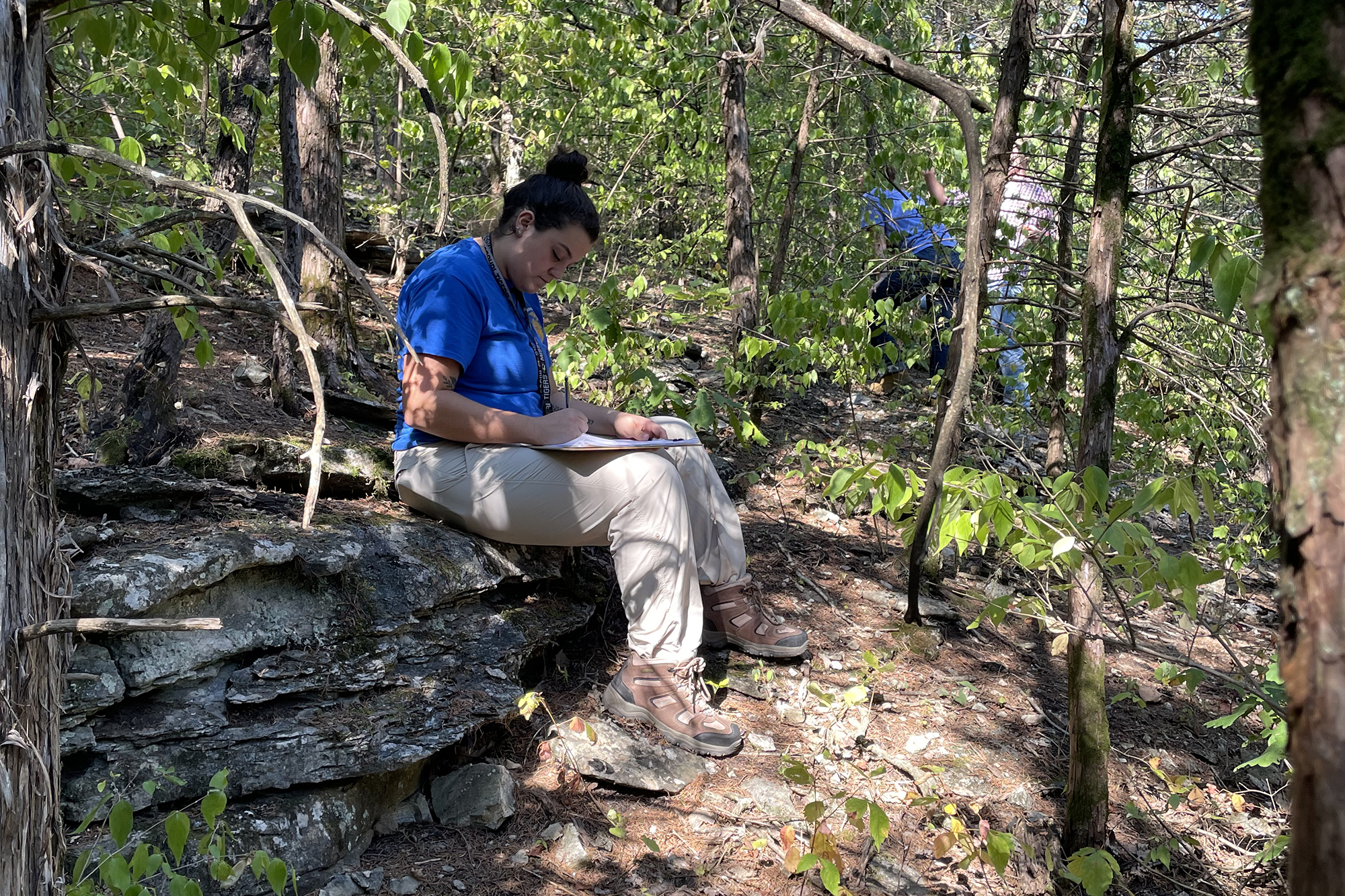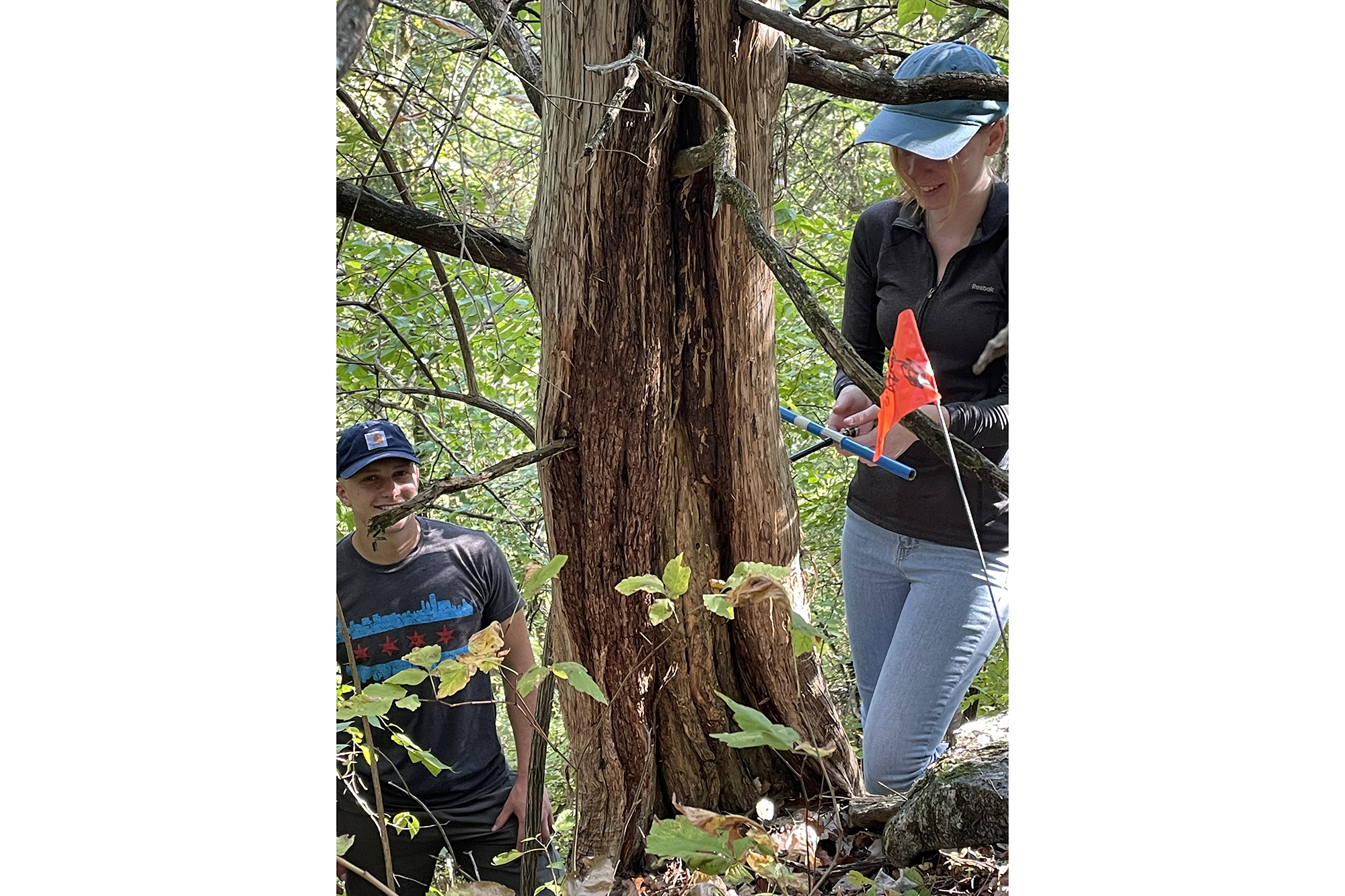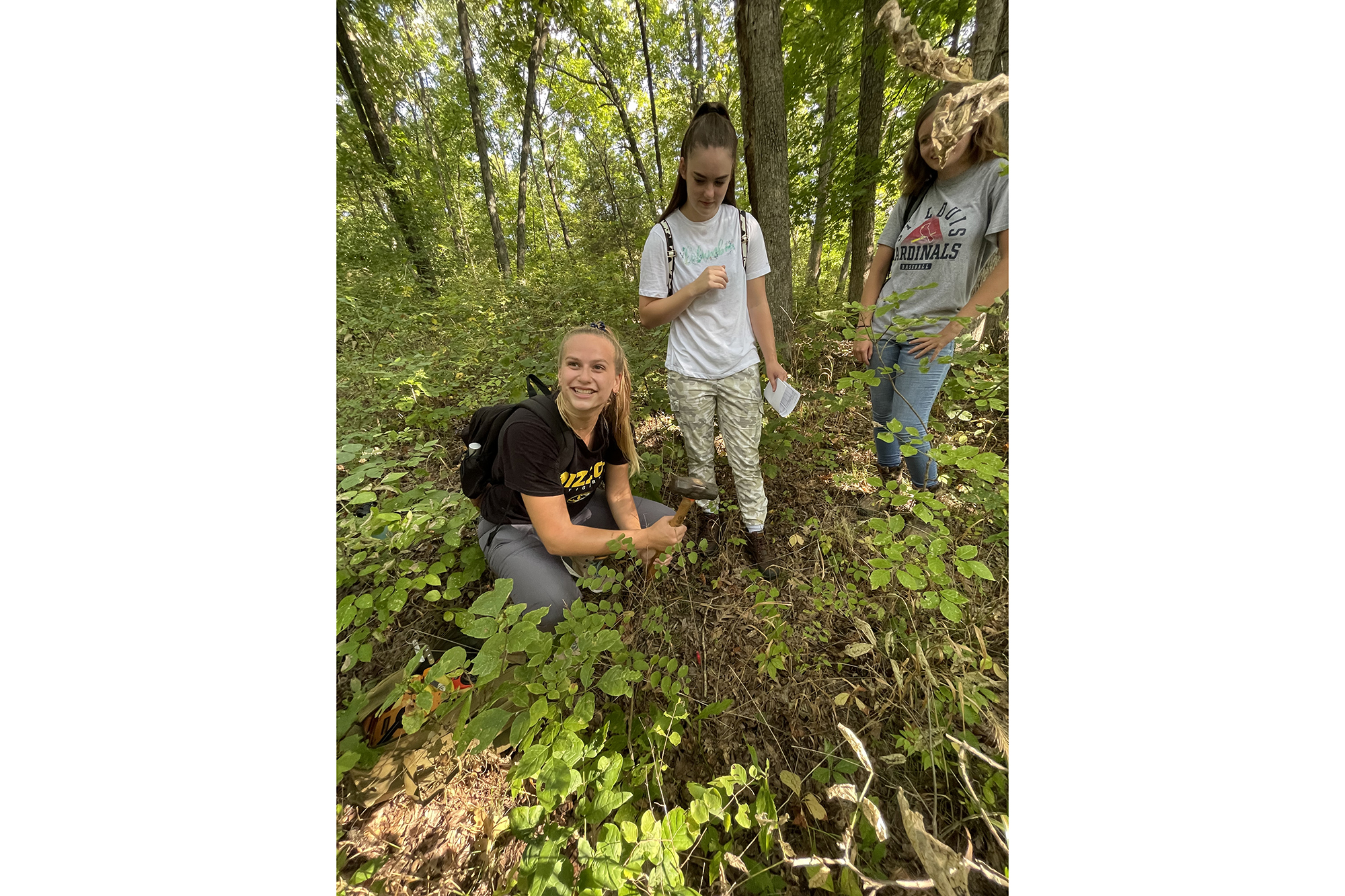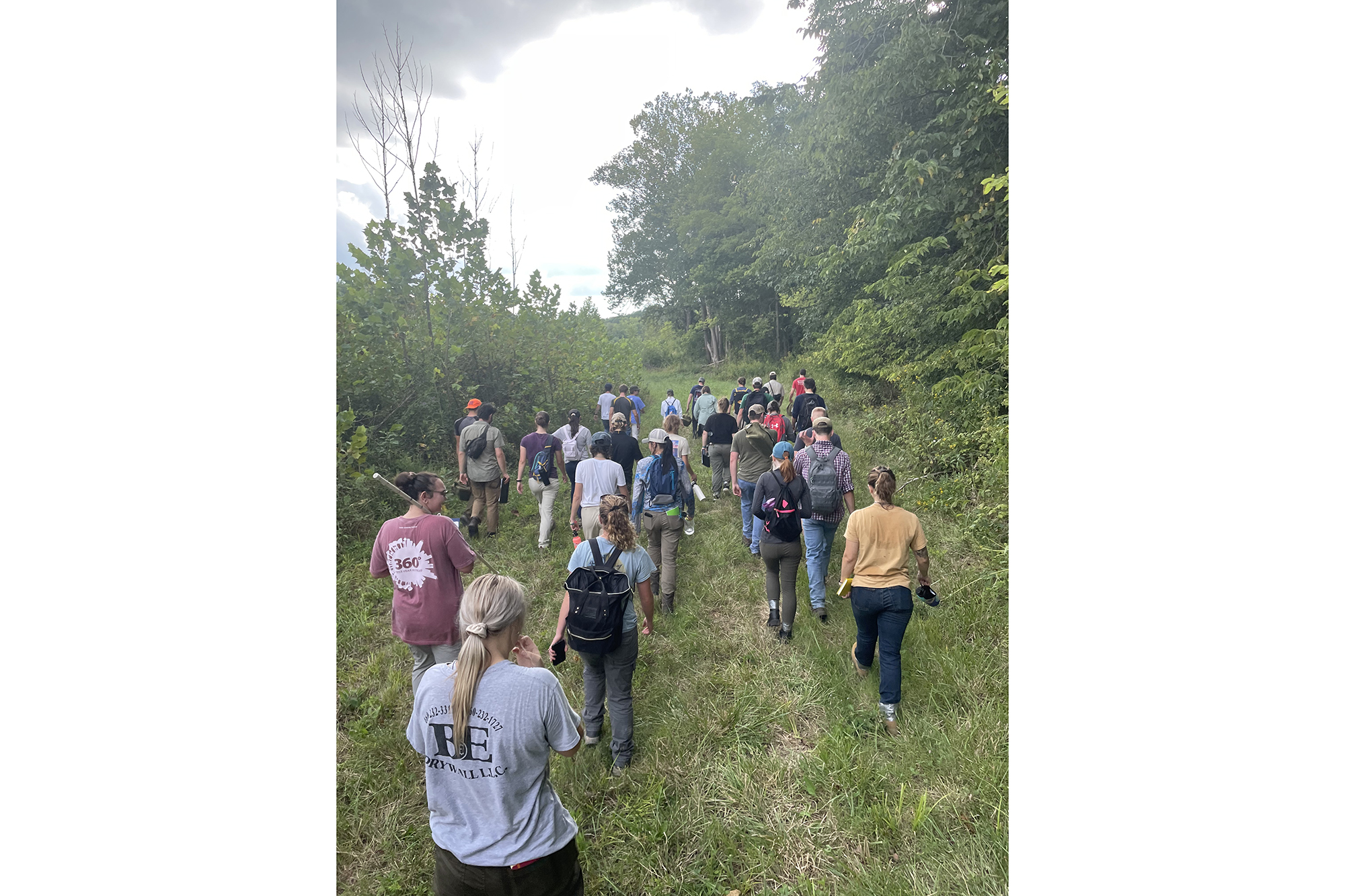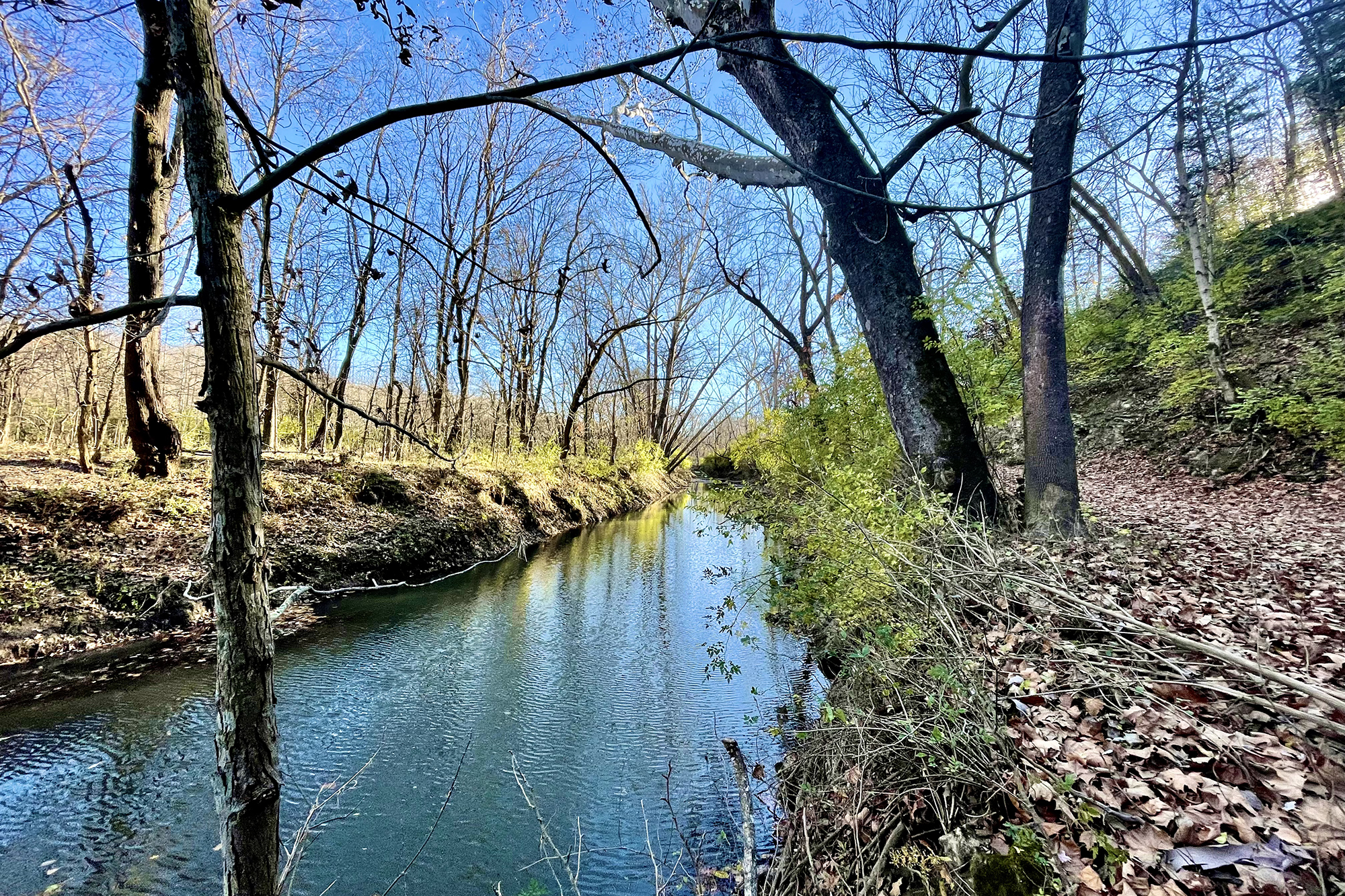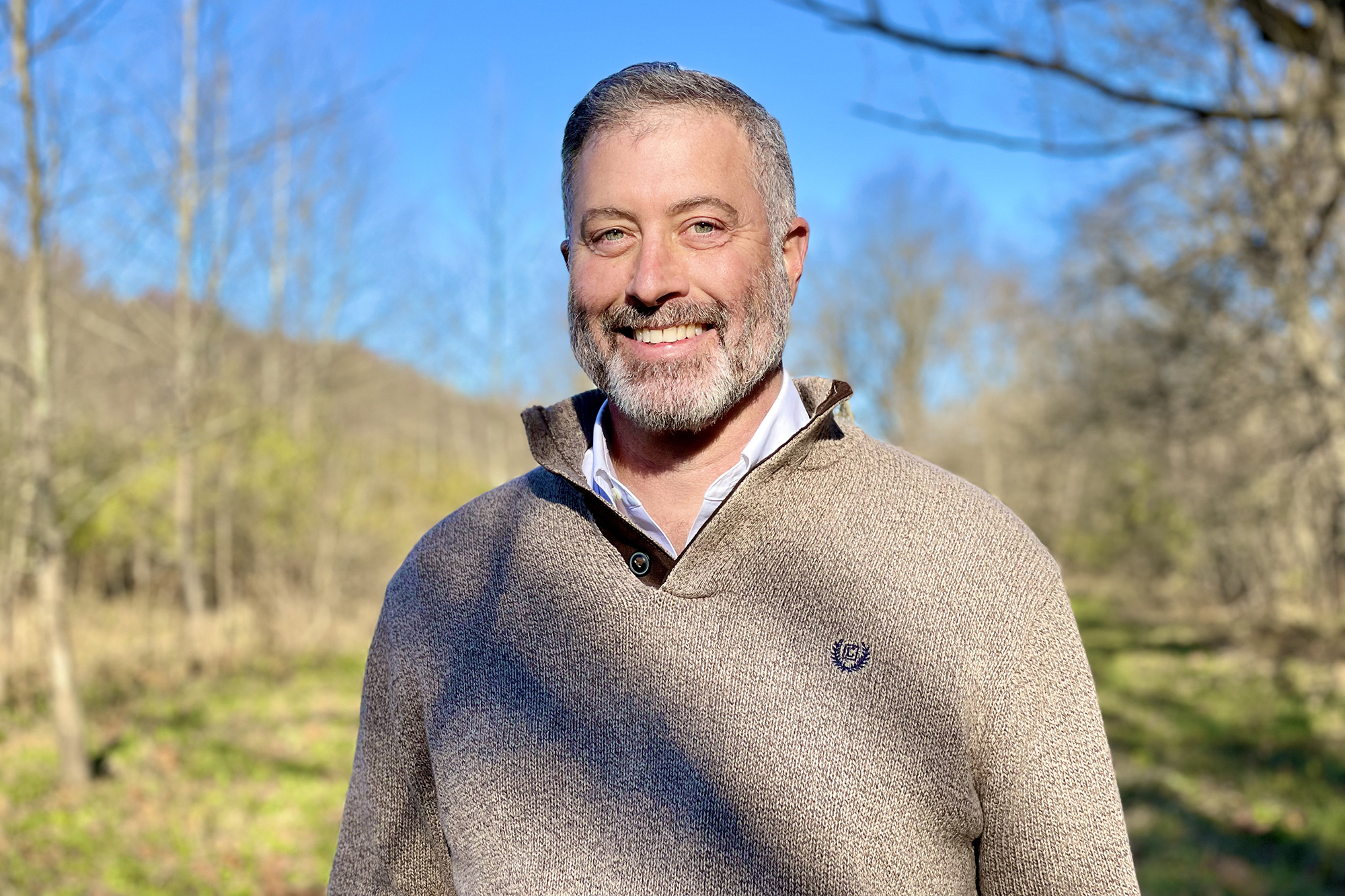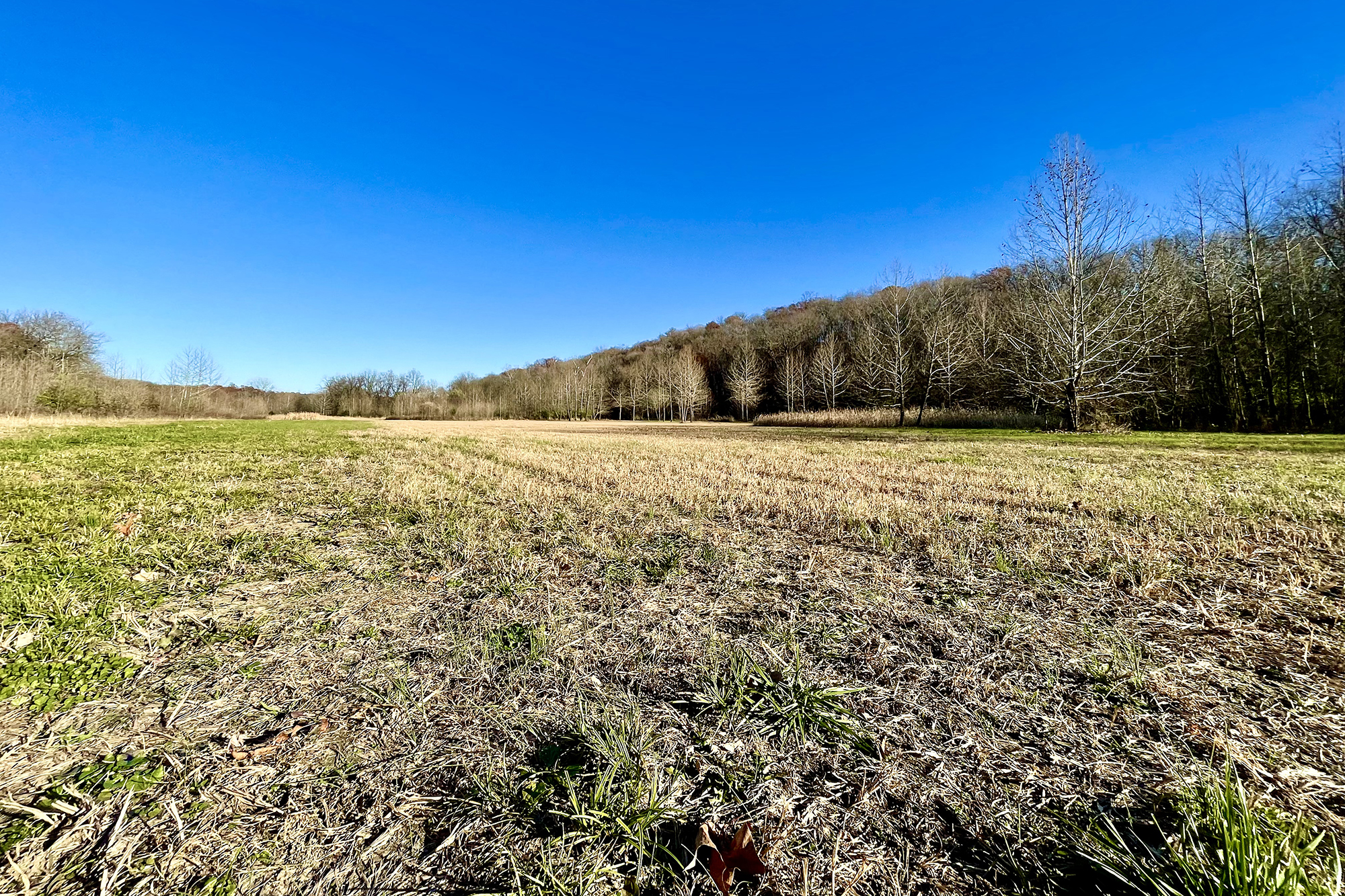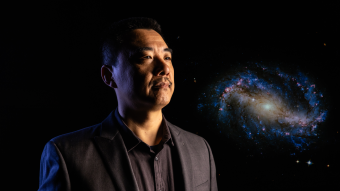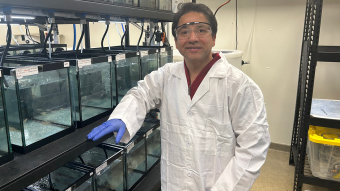Dec. 14, 2021
Contact: Deidra Ashley, ashleyde@missouri.edu
The University of Missouri’s College of Agriculture, Food and Natural Resources (CAFNR) has a new outdoor research site, and it’s just as beautiful as it is useful. The DeLine Community Research Site, a nearly 100-acre plot of land about 15 minutes from campus, is a hidden gem for Mizzou’s natural resource and forestry researchers. From north and south facing slopes filled with trees, to valleys, creeks, caves and more — it’s the perfect spot for students to dig into hands-on learning.
Getting started
Dusty Walter, director of natural resources management in CAFNR’s Office of Research, helps maintain the property, coordinate research activities and keep an open line of communication with surrounding neighbors and the landowner, DeLine Holdings group.
“Everything we do in agriculture, food and natural resources has an end customer,” Walter said. “The people in this community are customers of natural resources like water quality, the air we breathe and potential damage from flooding. This site has given our faculty and students the opportunity to look at those resources’ impact in our community — and being close to campus is a great benefit.”
Even though the site just opened in September, research is already being conducted. Graduate student Jessi Wilson and others are examining water quality by collecting data from the area of Rocky Fork Creek that runs through the property.
“We are currently deploying instruments within the stream that measure stream health indicators, such as electrical conductivity and water temperature, which can give us a general idea of the health of Rocky Fork Creek,” Wilson said. “We are also collecting water samples for nutrients, which allow us to see how much of these nutrients are available to organisms in the stream. We can also check for excess nutrients from flooding events and human activities.”
Looking forward
While teams, including Wilson’s, are focused on the current state of the property, others are looking to determine the history of the site, as well as how to prepare for the future.
“The site is located at the transition between the city and rural surroundings, so it has many interesting forest issues to investigate like invasive species, over browsing by deer and declines in oak tree regeneration,” said Mike Stambaugh, associate professor of forest ecology.
Currently, Stambaugh has students visiting the site to describe its conditions, forest types and plant composition. They are also taking a look into the forest’s past.
“We are measuring the mature trees and regenerating trees to understand how the forest initiated and how it has changed over the last 100 years,” Stambaugh said. “Forests are constantly changing due to land use, climate, invasive species, and normal forest processes. We are working to disentangle these effects to better understand the current conditions, why they exist, and how they are likely to change in the future.”
Coming together
The site won’t only be creating hands-on learning opportunities for students at Mizzou. A goal for the future is to also provide education opportunities for the entire community to help Columbians understand the environment that surrounds them.
“We are the University of Missouri, and we are the University for Missouri as well,” Walter said. “In working with the DeLine Holdings group, we envision this as a community resource. It's a work in progress, but there is opportunity to start preparing grade-school students with STEM-related interests to get involved with natural resources and engineering programs.”
Story written by Madalyn Murry
